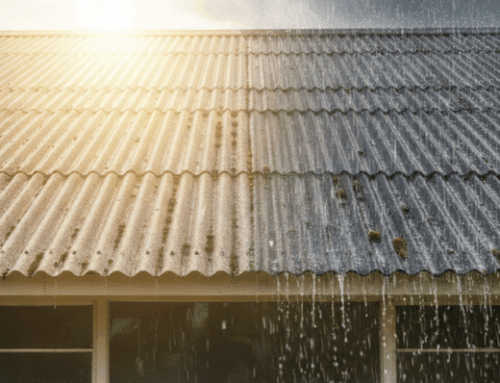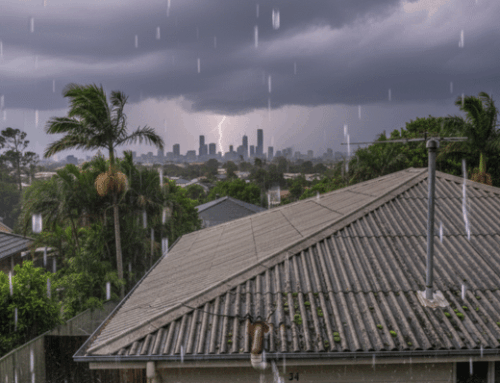When it comes to home improvement, doing it yourself can often save time and money. But when asbestos is involved, the stakes are exponentially higher — and the risks are life-altering. Even what seems like a “small” roof patch can turn into a health hazard, a legal mess, and a contamination crisis.
At ICON Asbestos Roof Replacement, we’ve seen firsthand the aftermath of DIY asbestos work, and it’s never worth the risk. Here’s what every homeowner needs to understand before they even think about touching that old asbestos roof.
Microscopic Fibers, Massive Danger: What You’re Really Inhaling
Asbestos is composed of tiny, needle-like fibers that are invisible to the naked eye. When disturbed — like during roof removal or drilling — these fibers become airborne and can be inhaled without you noticing. Once inhaled, they embed in your lungs and remain there for decades. The worst part? You might not feel the effects immediately.
Diseases caused by asbestos exposure, such as mesothelioma, asbestosis, and lung cancer, often don’t show symptoms until 20–30 years later. That means one afternoon of DIY roof work could lead to a lifetime of health issues.
The Hidden Cost of “Saving Money” on an Asbestos Job
One of the most common reasons homeowners take the DIY route is cost. It’s tempting to think that a little elbow grease can save thousands on a roofing job. But with asbestos, the reality is far different. If you mishandle asbestos, you’ll likely need professional decontamination of your home, specialized waste removal, and possibly even legal help if regulations were breached.
Moreover, if your exposure leads to illness or affects your family’s health, no amount of initial savings will make up for the long-term costs — emotionally, physically, and financially.
How One Mistake Can Contaminate Your Entire Home
Asbestos fibers are incredibly mobile. Once disturbed, they don’t just stay on the roof — they can travel through ventilation systems, settle in carpet fibers, and cling to clothing. Homeowners have unknowingly carried these fibers into nurseries, bedrooms, and kitchens, creating invisible health hazards throughout the house.
Cleaning up after an asbestos contamination isn’t as simple as vacuuming. It requires certified hazardous material professionals with equipment most homeowners don’t have access to. Worse still, even a small amount of lingering asbestos dust can remain dangerous.
YouTube Tutorials Aren’t Enough: The Myth of DIY Safety
Online videos can make anything look easy — including asbestos removal. Unfortunately, these tutorials often oversimplify the process, omit crucial safety precautions, or are filmed in regions with looser regulations. They can give a false sense of confidence, leading DIYers to believe they’re taking the right steps when they’re actually putting themselves and others at risk.
There’s no safe way to DIY asbestos roof removal unless you have the proper training, certifications, and equipment. And if you had those — you’d already know it’s not a DIY job.
Legal Nightmares: The Penalties for Mishandling Asbestos
In many countries and regions, asbestos removal is heavily regulated. Mishandling or disposing of it improperly isn’t just dangerous — it’s illegal. Homeowners can face heavy fines, lawsuits, and even criminal charges if they violate asbestos regulations.
In Australia, for example, penalties for unauthorized asbestos work can reach tens of thousands of dollars. It doesn’t matter whether you were “just patching a leak” or thought you had the situation under control. If you don’t follow the law exactly, you’re liable.
ICON Asbestos Roof Replacement ensures full compliance with all local and national safety standards — so you don’t have to worry about the legal implications.
Protecting Your Family: Why Exposure Risks Last for Decades
Asbestos-related diseases don’t show symptoms right away, and that’s part of what makes them so insidious. You could expose your spouse, children, or even future occupants of your home without ever realizing it. Children are particularly vulnerable, as their lungs are still developing and they breathe more rapidly than adults.
Some families have tragically learned this the hard way — years after a well-intentioned DIY project. Avoiding professional help might seem harmless now, but it can cast a long shadow on your family’s future health.
The Science Behind Asbestos: Why It’s Still So Dangerous
Asbestos was once hailed as a miracle material for its fireproof and insulating properties. But once its health effects became clear, its use was banned or restricted in many countries. So why is it still dangerous today?
Because so many older buildings — especially those built before the 1990s — still contain asbestos in their roofs, walls, insulation, and flooring. The danger isn’t in the presence of asbestos; it’s in the disturbance of it. That’s why even small jobs, like replacing a roof sheet or drilling holes, can be extremely risky if asbestos is present.
Professional Removal vs. DIY: A Life-or-Death Difference
Certified asbestos removalists are trained to handle every step of the process safely — from initial inspection to complete decontamination and legal disposal. They wear protective gear, use specialized equipment, and follow stringent protocols.
Trying to replicate this as a homeowner not only puts you in danger, but you’ll likely miss critical safety steps. At ICON Asbestos Roof Replacement, we’ve safely replaced hundreds of asbestos roofs, and every single one required expert handling. It’s not just a job — it’s a hazardous material operation.
Asbestos Disposal Isn’t Just Complicated — It’s Heavily Regulated
Disposing of asbestos isn’t as simple as hauling it to the local tip. It must be sealed in special packaging, transported in marked vehicles, and accepted only at designated hazardous waste facilities. Mishandling any of this — even unintentionally — can lead to fines or cause widespread contamination.
Some homeowners think they can “hide” asbestos in regular waste, but doing so can endanger sanitation workers, landfill staff, and the environment. It’s irresponsible, illegal, and completely avoidable with professional help.
Think It’s Just Dust? Think Again
One of the most dangerous misconceptions about asbestos is that if you can’t see it, it can’t hurt you. In reality, asbestos dust is invisible to the naked eye. Unlike regular dust, which might irritate your eyes or sinuses, asbestos dust is made of razor-sharp fibers that lodge deep in your lungs.
It doesn’t smell. It doesn’t cause immediate coughing. You may not even know you were exposed. That’s why so many victims of asbestos-related illnesses were caught off guard — and why professionals treat every removal job with maximum caution, no matter the size.
If your roof contains asbestos or you even suspect it might, the best thing you can do is walk away and call the experts. At ICON Asbestos Roof Replacement, our trained and licensed professionals are equipped to handle asbestos safely and thoroughly. Don’t take the risk — your health, your home, and your family’s future are worth far more than a shortcut.




